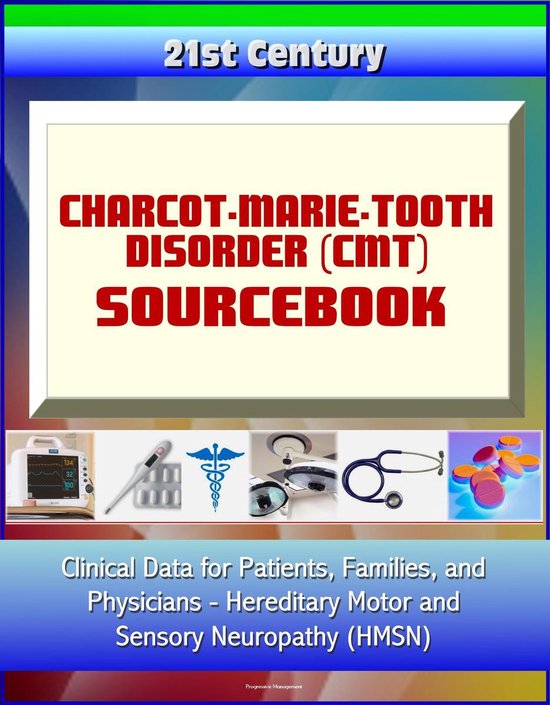21st century charcot marie tooth disorder cmt sourcebook clinical data for patients families and physicians hereditary motor and sensory neuropathy hmsn

Direct beschikbaar
This comprehensive ebook provides authoritative information and practical advice from the nation's health experts about Charcot-Marie-Tooth disease (CMT), also known as hereditary motor and sensory neuropathy (HMSN) or peroneal muscular atrophy.
Starting with the basics, and advancing to detailed patient-oriented and physician-quality information, the 21st Century Sourcebook series gives empowered patients, families, caregivers, nurses, and physicians the information they need to understand this complex and mystifying disease. There is extensive coverage of symptoms, diagnosis, medical testing, clinical research, drugs and potential treatments
Chapter 1: National Institute of Neurological Disorders and Stroke (NINDS) Information * Chapter 2: National Human Genome Research Institute (NHGRI) Information * Chapter 3: FDA Information * Chapter 4: National Institutes of Health Research Portfolio Online Reporting Tools (RePORT) - CMT Studies * Chapter 5: Clinical Trials * SECTION B: GUIDE TO LEADING MEDICAL WEBSITES; INTERNET RESOURCES FOR MEDICAL AND HEALTH INFORMATION
This edition includes our exclusive Guide to Leading Medical Websites with updated links to 81 of the best sites for medical information, which let you quickly check for updates from the government and the best commercial portals, news sites, reference/textbook/non-commercial portals, and health organizations.
Charcot-Marie-Tooth disease (CMT) is one of the most common inherited neurological disorders, affecting approximately 1 in 2,500 people in the United States. CMT comprises a group of disorders caused by mutations in genes that affect the normal function of the peripheral nerves. The peripheral nerves lie outside the brain and spinal cord and supply the muscles and sensory organs in the limbs. A typical feature includes weakness of the foot and lower leg muscles, which may result in foot drop and a high-stepped gait with frequent tripping or falls. Foot deformities, such as high arches and hammertoes (a condition in which the middle joint of a toe bends upwards), are also characteristic due to weakness of the small muscles in the feet. In addition, the lower legs may take on an "inverted champagne bottle" appearance due to the loss of muscle bulk. Later in the disease, weakness and muscle atrophy may occur in the hands, resulting in difficulty with fine motor skills. Some patients experience pain, which can range from mild to severe.
- 1 Bekijk alle specificaties
Taal: en
Bindwijze: E-book
Oorspronkelijke releasedatum: 09 november 2012
Ebook Formaat: Epub zonder kopieerbeveiliging (DRM)
Hoofdauteur: Progressive Management
Hoofduitgeverij: Smashwords Edition
Lees dit ebook op: Android (smartphone en tablet)
Lees dit ebook op: Kobo e-reader
Lees dit ebook op: Desktop (Mac en Windows)
Lees dit ebook op: iOS (smartphone en tablet)
Lees dit ebook op: Windows (smartphone en tablet)
Studieboek: Nee
EAN: 9781301328130